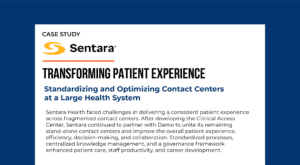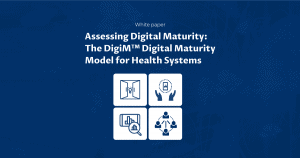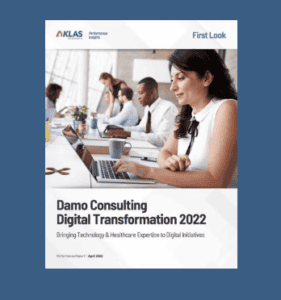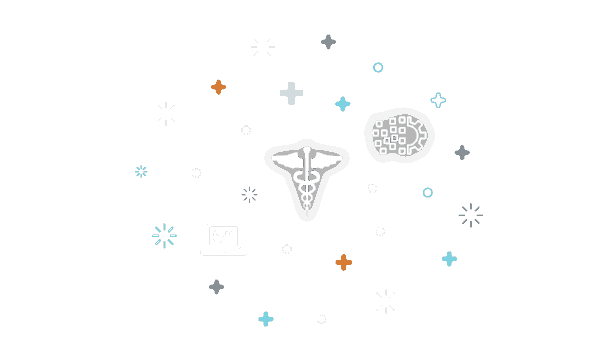Redefining Healthcare Innovation Through Human-Centered Technology at Vanderbilt

In today’s fast-evolving healthcare environment, academic medical centers are not only care providers and educators—they are also innovation labs for the future of medicine. In an engaging conversation on The Big Unlock podcast, Dr. Yaa Kumah-Crystal, Associate Professor of Biomedical Informatics and Pediatric Endocrinologist at the Vanderbilt University Medical Center, shared her insights into the evolving intersection of technology, medical training, and patient-centered care. With a deep understanding of both clinical workflows and digital tools, she discussed how academic medical centers like Vanderbilt are innovating responsibly while keeping people—both patients and providers—at the heart of transformation.
Listen to the full conversation
Innovation Must be Rooted in Real-World Problems
At large academic institutions, innovation isn’t pursued for its own sake. Dr. Kumah-Crystal emphasized the importance of clearly defining the problem before investing in new technology. “You have to be really thoughtful about how you’re going to implement technology so that it truly serves your mission,” she said.
Vanderbilt adopts a pilot-first approach, experimenting with tools early to shape their development before wider deployment. Importantly, the team defines ROI based not just on operational metrics like turnaround times or message volumes, but also on qualitative outcomes—such as reduced provider burnout and improved clinician satisfaction. As Dr. Kumah-Crystal put it, “Sometimes the ROI is just that your providers are less miserable.”
Emerging Tools Are Changing Expectations Among Clinicians
The explosion of digital tools like ambient clinical documentation is already altering expectations among young clinicians. Dr. Kumah-Crystal shared a revealing anecdote: one of her trainees joked she couldn’t imagine working without ambient documentation at her next job. While said in jest, this shift illustrates a broader trend—physicians are beginning to see modern digital tools not as luxuries but as necessities for efficient and humane care delivery.
Organizations not providing cutting-edge technology risk losing talent to those that do. “If your organization is not on the leading edge,” she cautioned, “people might decide they want to go somewhere else.”
Balancing Efficiency with Education in Training Programs
One of the most compelling parts of the discussion revolved around medical education. While digital tools improve efficiency, they also raise concerns about whether trainees are learning the fundamental skills of clinical reasoning and communication.
Dr. Kumah-Crystal underscored that it’s not just about teaching students how to use tools—it’s about preserving their learning journey. “Trainees need to reach a level of proficiency before they worry about efficiency,” she noted. That means medical educators must strike a careful balance: integrate new tools without diminishing the critical thinking and synthesis skills that are the cornerstone of clinical practice.
At Vanderbilt, training programs include hands-on experience with digital tools, but never at the expense of foundational medical knowledge.
Beyond the EMR: Communication and Interoperability Are Ripe for Innovation
While much of digital health focuses on EHR platforms and patient portals, Dr. Kumah-Crystal pointed out a range of overlooked systems that physicians engage with daily. Chief among these are communication systems—many of which remain outdated.
“We’re still using fax machines and pagers,” she said, highlighting the irony of high-tech hospitals relying on low-tech communication tools. Interoperability remains a major hurdle. For example, essential patient data is often trapped in other institutions’ systems, requiring manual, inefficient workarounds like faxed PDFs.
Standards like SMART on FHIR offer hope, enabling more seamless data exchange across systems. But progress has been slow, and there’s immense opportunity for transformation in this area.
The Future of Care is Remote, Insightful, and Empowered
Looking ahead, Dr. Kumah-Crystal envisions a future where care extends well beyond hospital walls. With wearable devices and home-monitoring tools, clinicians can gain real-time insights into patients’ lives, enabling earlier interventions and more personalized care. As a pediatric endocrinologist, she’s particularly interested in how technologies like continuous glucose monitors (CGMs) can provide critical data from environments like schools.
“How can we better understand what’s going on when patients are outside the medical center?” she asked. The goal isn’t just to inform providers—but to empower patients and families as active participants in their health.
She sees enormous potential in technologies that provide both clinicians and patients with meaningful, actionable data in real time—whether it’s through smartwatches, ambient sensors, or predictive algorithms.
Dr. Yaa Kumah-Crystal’s insights serve as a powerful reminder that healthcare innovation must be both human-centered and mission-aligned. At Vanderbilt, this philosophy drives a nuanced approach to technology adoption: one that balances experimentation with accountability, and innovation with empathy.
Whether it’s preparing the next generation of clinicians, refining communication channels, or extending care into the home, her work exemplifies how academic medicine can lead the way in building a better, more connected future for healthcare.
A Pediatric-Centric Approach to AI
Pediatric healthcare comes with its own unique challenges—fewer available data points, smaller population sizes, and higher sensitivities around communication and consent. This makes the responsible use of AI even more critical.
Dr. Morse noted that solutions must be designed with children and families in mind, not simply adapted from adult care settings. Whether deploying ambient tools, summarizing clinical notes, or streamlining administrative workflows, every use case must prioritize trust, safety, and patient experience.





